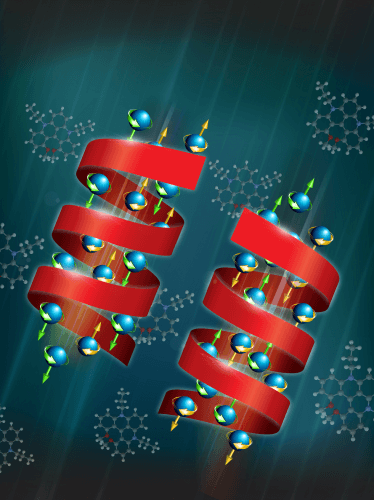In a study carried out by researchers from the Hebrew University and the Weizmann Institute, an effective and relatively cheap method was found for separating chiral molecules in drugs. "The research has become of great applied importance, with implications for the creation of better medicines in the future," states one of the researchers Prof. Ron Naaman

Are you afraid of side effects following drug treatment? In a new study in which research groups led by Professor Yossi Platiel from the Hebrew University and Professor Ron Naaman from the Weizmann Institute of Science took part, a new method was found by which drugs and other substances for biological use can be obtained when they are purer and therefore work more efficiently, while significantly reducing possible side effects be caused after taking them.
Biologically important substances often have a special structure called chirality, when this structure is symmetrical like the palms of the hands. In nature (in plants, animals and also in humans) the molecules appear with only one symmetry. In simple chemical production, two symmetries of the molecules are created, meaning both those with right-handed symmetry and those with left-handed symmetry. Therefore, it is of great importance to find a simple and efficient general separation method in order to obtain only the active substance.
In some cases, the existence of substances with both symmetries in one drug is harmful and life-threatening. A prominent example is the use of the drug thalidomide, which in the past was intended to treat morning sickness in women in the first months of pregnancy, led in the 60s to the birth of babies with severe birth defects, especially in the limbs. In a study conducted to discover the mechanism that caused the appearance of the defects, it was discovered that thalidomide, which is chiral, appeared in the drug in both forms, right and left. While the right thalidomide was effective against morning sickness, the left thalidomide caused birth defects. Separating them, therefore, was critical to the birth of healthy babies.
In most of the drugs that exist today, it is not customary to separate the chiral molecules. In fact, only a small percentage of the drugs in which both molecules appear are completely separated, despite the recommendations of the Medicines Authority, mainly because of the high expense involved in this process.
In the groundbreaking research of Naaman and Platiel and their groups, a relatively simple way was found to separate chiral molecules into the two symmetries. Prof. Lior Kronik from the Weizmann Institute contributed to the computational aspect of the research. Prof. Stuart Parkin of the Max Planck Institute in Halle, Germany, and Tomas Bacanski of the Polish Academy in Warsaw provided the researchers with magnetic surfaces.
In an article published in the prestigious scientific journal "Science", the researchers showed that the two components are adsorbed at a different rate on magnetic surfaces. This feature, in their opinion, makes it possible to create the desired separation in a simple and easy way. "This method has great potential in many markets such as the pharmaceutical market, and we are engaged in turning the idea from theory to reality with the help of the implementation companies of the Weizmann Institute and the Hebrew University," says Peltiel.
Prof. Naaman adds that "the results we received prove that research that we started as basic research has become of great applied importance, with implications for the creation of better medicines in the future, more environmentally friendly pesticides and more."
More of the topic in Hayadan:
